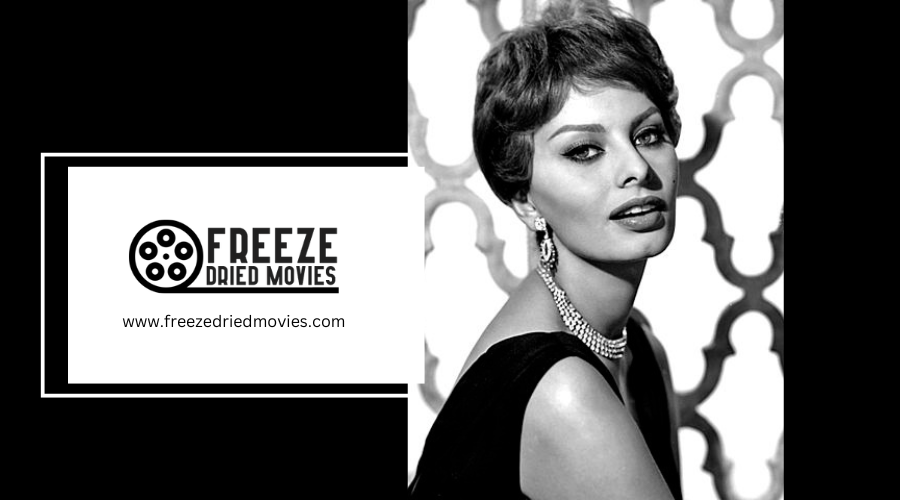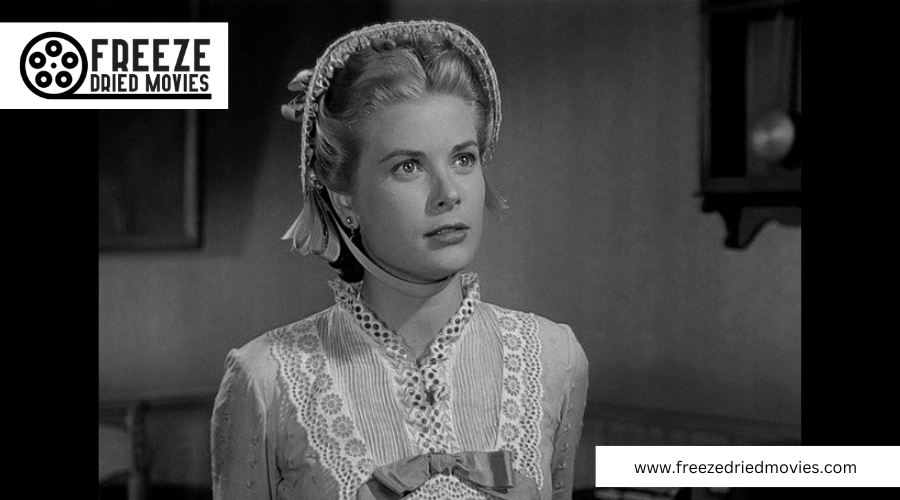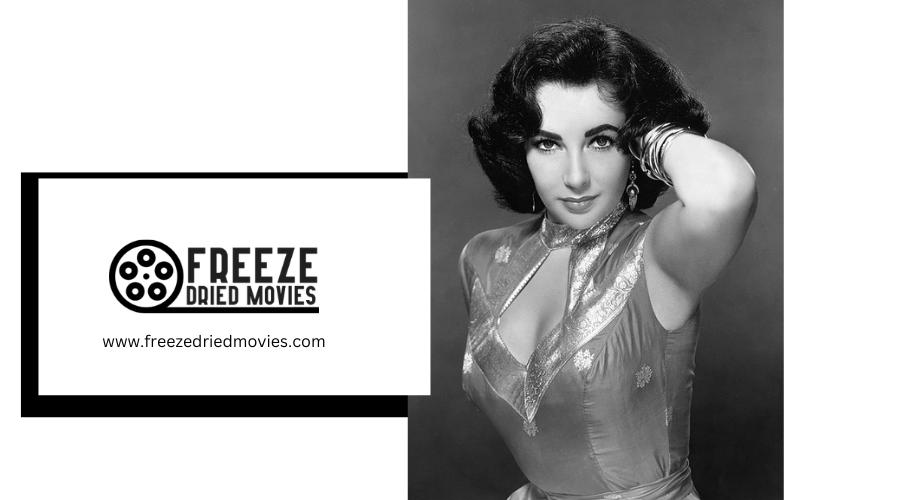The Best Movies from the Golden Age of Hollywood
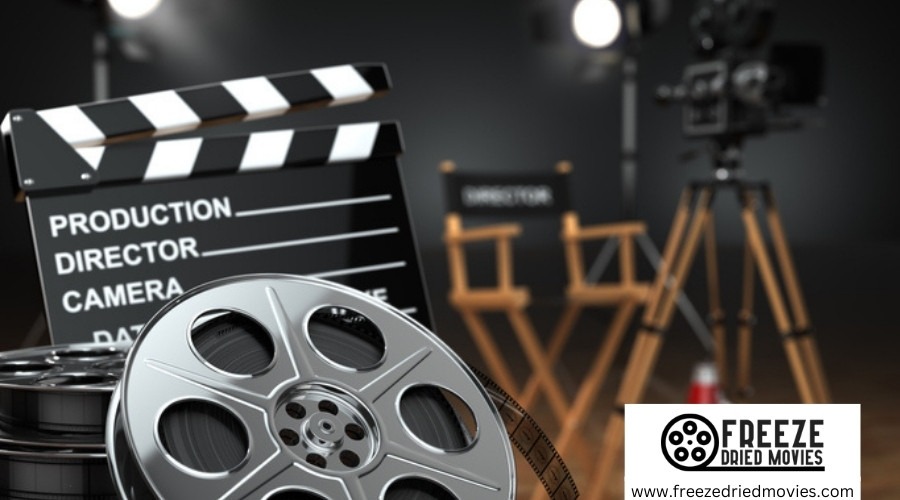
The "Golden Age of Hollywood" marked a transformative era in the American movie industry. It was the time of creativity and innovation that shaped the future of filmmaking. Many cinematic classics from this period significantly impacted American culture and beyond.
The 1940s
The 1940s was a pivotal era in Hollywood's history. This period saw significant and rapid technological advancements, with improvements in sound, visuals, and innovations in special effects.
Hollywood's Golden Age was nearing. But on the other hand, global cinema was rising. The war influenced numerous films, directly tackling the conflict or exploring its aftermath. Crime and horror genres evolved into film noir while romantic comedies underwent a new transformation. Amidst the somber backdrop of world events, the 1940s gave rise to some of cinema's most influential works and brought several pioneering filmmakers into the spotlight.
Postwar and beyond
The shift from black and white to Technicolor began to take hold. While Technicolor was first developed in the 1930s, color movies became more common after World War II. This new development brought movies to life, enhancing their visual appeal. Musicals, such as Singin' in the Rain, used color to dazzle moviegoers with their eye-popping sets and costumes.
Westerns also thrived in the 1950s. John Wayne starred in classics like The Searchers, while Gary Cooper won an Oscar for his role in High Noon. These movies often explored complex themes of morality and justice.
Crime and mystery films were also popular. Alfred Hitchcock directed some of his best work this decade, including Rear Window and Vertigo. These films kept audiences on the edge of their seats with suspense and psychological thrills.
During this period, sci-fi movies became increasingly popular due to the Cold War and progress in space exploration. This sparked a surge in fascination with extraterrestrial beings and futuristic technology, as exemplified by films like The Day the Earth Stood Still and Forbidden Planet.
More films began to take on social issues. On the Waterfront tackled corruption, while Rebel Without a Cause explored teen angst. These movies reflected the changing social attitudes of the time.
The movies that best represent the Golden Age of Hollywood
Here's a list of some standout films from the 1940s and 1950s (in no particular order):
1. Vertigo (1958)

Alfred Hitchcock's 1958 thriller Vertigo is a landmark in cinema history. The film follows an ex-detective with a fear of heights who becomes entangled in a mysterious case involving a friend's wife. Vertigo initially received mixed reviews, but it has since become one of the most respected and analyzed films.
2. Rebecca (1940)
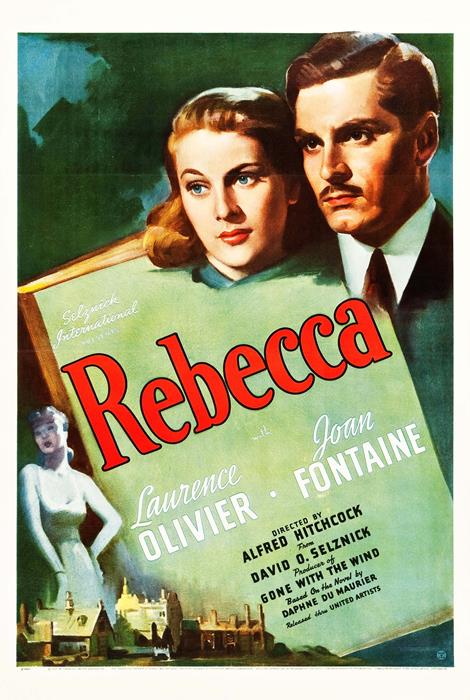
Another thrilling masterpiece by Alfred Hitchcock, Rebecca, creates an eerie atmosphere unlike any other movie. Manderley's grand estate provides a chilling backdrop for the story. Lead stars Laurence Olivier and Joan Fontaine's acting feels oddly distant, adding to the film's unsettling mood.
Rebecca has a strange, lifeless quality – it's as if the characters are moving through a world drained of warmth and vitality. This cold, detached feeling permeates the film, creating a sense that unseen forces are at work.
Rebecca's absence looms large over every scene. The film skillfully builds tension and unease without relying on typical thriller tactics. Rebecca makes viewers feel like outside observers in another world.
3. It's a Wonderful Life (1946)

Your Christmas won't be complete without seeing this perennial holiday favorite. Frank Capra's It's a Wonderful Life started as an underappreciated gem but grew into a beloved Christmas tradition. The film follows George Bailey, a man facing a personal crisis on Christmas Eve. As he contemplates ending his life, divine help arrives to show him the true value of his existence.
The emotional journey is the movie's strength. Audiences become invested in George's life story before his moment of despair. This buildup creates a deep connection with the character, making his struggles feel real and relatable.
Capra's adept storytelling shines through during the film's somber moments, providing depth and contrast to the positive message. The director's finesse in balancing light and dark elements propels the movie beyond being just a heartwarming story.
It's a Wonderful Life found its audience through TV broadcasts, becoming a holiday staple. The reason for its lasting appeal is its timeless message about togetherness, self-worth, and the importance of small acts of kindness. Its heartwarming conclusion resonates with viewers year after year, reminding us that every life touches others meaningfully, often without us realizing it.
4. Citizen Kane (1941)
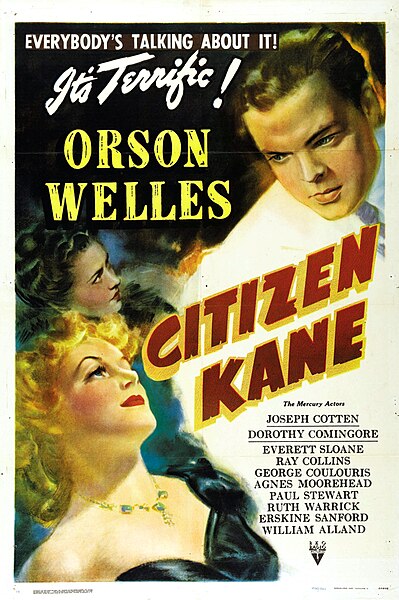
Orson Welles' debut masterpiece, Citizen Kane, stunned the film world. It showcased his extraordinary talents as a director, writer, and lead actor, and its innovative techniques set new standards for filmmaking.
Citizen Kane's striking visuals are a crucial feature. Gregg Toland's cinematography uses deep focus to create stunning shots, letting viewers see close and far objects clearly in the same frame.
The film's editing is equally bold. One memorable cut transitions from a newsreel to the main story, catching viewers off guard. These creative choices help tell the complex tale of Charles Foster Kane's life.
As for Welles' performance as Kane, it's no less than remarkable. He portrays the character from young adulthood to old age convincingly. This range displays his acting skills alongside his other talents.
Citizen Kane's place among the greatest films ever made is well-deserved. Its impact on cinema continues to this day.
5. Rear Window (1954)
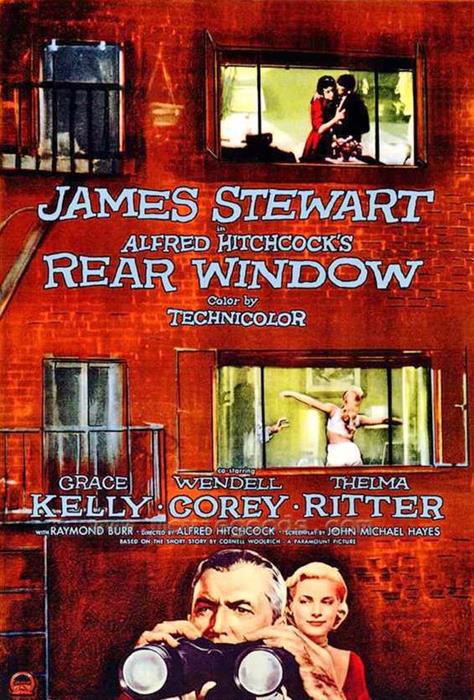
Rear Window is another sterling example of Alfred Hitchcock's genius. This 1954 thriller stars James Stewart as a photographer stuck at home with a broken leg. As he watches his neighbors through his apartment window, he becomes convinced he's seen a murder.
The film skillfully builds up tension, with every scene contributing to a heightened feeling of unease. Hitchcock effectively uses the cramped setting to evoke a sense of being trapped. It reflects Stewart's character, who can't leave his apartment.
Grace Kelly shines as Stewart's glamorous model girlfriend. Her elegance contrasts with the gritty city outside. They try to solve the mystery unfolding across the courtyard.
Rear Window masterfully mixes suspense with humor and romance, keeping viewers on the edge of their seats while giving them moments to breathe. The film also explores loneliness and isolation in big cities.
Hitchcock's keen eye turns mundane settings into nail-biting moments. A raised blind or a distant scream takes on a new meaning. This skill solidifies Rear Window as one of the director's finest works.
6. The Grapes of Wrath (1940)
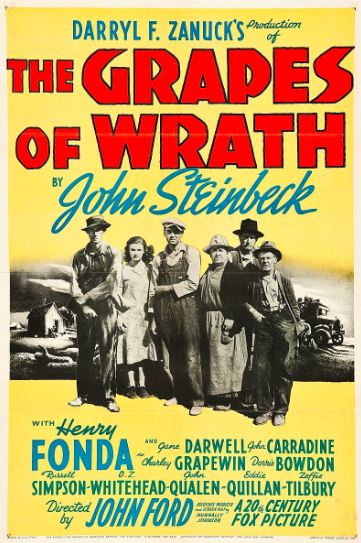
The Grapes of Wrath is a powerful film that brings John Steinbeck's famous novel to life. The movie shows the challenges of the Great Depression and Dust Bowl era. John Ford directed this crucial work with great skill and care.
Henry Fonda plays Tom Joad, the main character. His acting helps viewers connect with the struggles of that time. The movie traces the Joad family's journey as they abandon their farm and seek employment in California.
The movie fearlessly portrays hunger and death. However, it also gives viewers a sense of hope through Tom Joad's character. His resilience helps the family to keep going during challenging times.
When it was released, The Grapes of Wrath earned critical praise. It received seven Oscar nominations and won two awards. Many still see it as one of the best films ever made, showcasing an essential part of American history that touches people's hearts.
7. Shadow of a Doubt (1943)
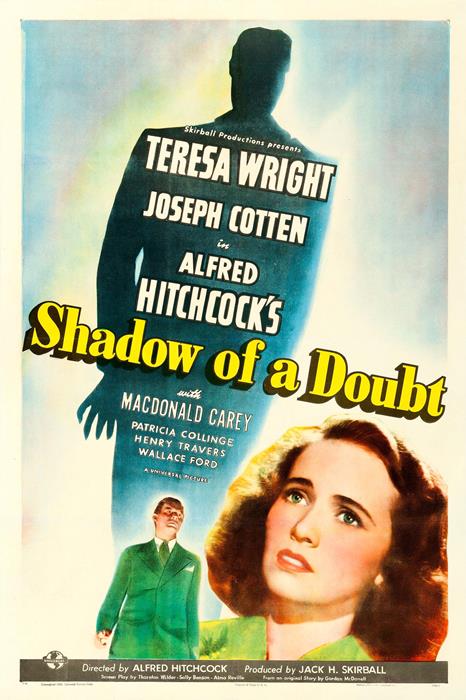
Alfred Hitchcock's Shadow of a Doubt is also a suspenseful masterpiece. Its simple yet gripping plot pulls viewers in. It tells the story of a young woman who starts to suspect her beloved uncle may not be as innocent as he seems. The film's power lies in its ability to create tension with minimal elements.
Hitchcock's mastery shines through as he evokes apprehension and tension in the audience. Even when viewers anticipate the truth early on, the suspense continues to escalate. The movie's power lies in its nuanced approach to dark themes, proving that sometimes less is more when creating memorable cinematic experiences.
8. Great Expectations (1946)
David Lean's celluloid version of Charles Dickens's classic novel is a cinematic masterpiece. The 1946 movie brings Pip's story to life with stunning visuals and emotional depth. Lean's direction shows his growing skill as a filmmaker.
The film effectively portrays the book's rich characters and plot twists. It traces Pip's journey from a poor orphan to a wealthy gentleman. Along the way, he deals with love, loss, and unexpected twists of fate.
Lean's camera work and lighting create a moody, atmospheric look, fitting perfectly with Dickens's Victorian England setting. The black-and-white cinematography adds to the film's timeless quality.
9. The Maltese Falcon (1941)
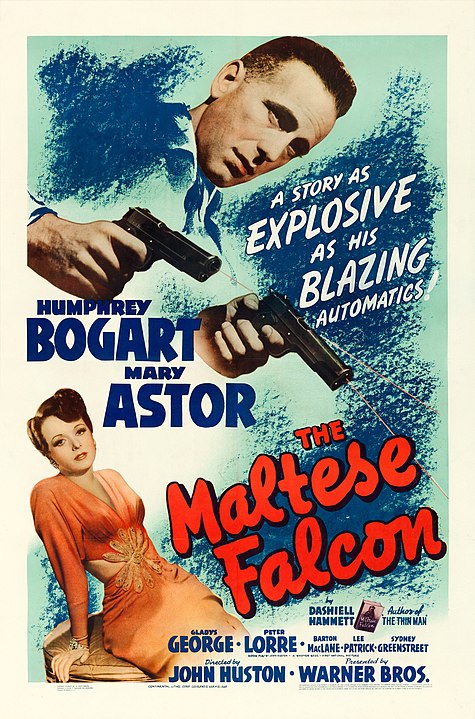
The Maltese Falcon launched John Huston's illustrious career as a director. This film noir gem tells a gripping story about a priceless statuette. Sam Spade, who is an uncompromising private eye, gets pulled into a tricky case when his partner is killed.
The movie keeps viewers on their toes as the story unfolds, as Spade tries to figure out the truth. Mary Astor portrays a woman who may not be what she seems, while Gladys George brings another element of mystery as Spade's secretary
At the center of it all is the blackbird statue that everyone goes for. The film packs curiosity about this object in a manner that became a model for many noir movies after it. Huston's skill shines through in this twisty tale with style and suspense.
10. Some Like It Hot (1959)

Some Like It Hot is a beloved comedy that stands the test of time. This Billy Wilder film stars Marilyn Monroe in one of her most memorable roles. The movie's plot centers on two musicians dressing as women to escape mobsters. They join an all-female band, leading to hilarious situations.
Monroe plays Sugar, a singer in the band. Her performance is funny, charming, and full of energy. She brings warmth and humor to every scene. Monroe's singing and comedic timing shine throughout the film.
This film is quite special, thanks to its clever script and well-chosen cast. Jack Lemmon and Tony Curtis play the two musicians in disguise whose reaction to Monroe's character provides the laughs. The film takes on issues of identity and attraction with a light touch.
Some Like It Hot charms audiences with witty dialogue and slapstick humor, blending romantic comedy and farce. The movie's 1920s setting adds to its charm, poking fun at gangster films while telling its own unique story.
11. Sunset Boulevard (1950)

Sunset Boulevard offers a sharp take on the entertainment industry, focusing on Norma Desmond, an aging star clinging to her past glory. She enlists the help of a young writer to help revive her career. Their relationship soon takes a tumultuous turn.
The film paints a picture of Hollywood's darker side, blending dark humor and crime elements. Viewers see the struggles of those trying to make it big and those who can't let go of fame.
Sunset Boulevard gives viewers a behind-the-scenes look at the film industry, showing Hollywood's grit and glamour. This mix of light and dark helps make the story memorable.
12. Sullivan's Travels (1941)

Sullivan's Travels is a clever film poking fun at Hollywood. It follows a director named Sullivan who wants to make a serious movie about tough times. He decides to live like a poor person to get ideas, resulting in hilarious and eye-opening experiences.
The movie shows that humor has the power to uplift anyone, even during challenging times. It suggests that comedy movies have value, like serious films.
The movie follows Sullivan's journey, which teaches him about life and filmmaking. He learns that making people laugh is significant work. Sullivan's adventures are silly at times, but they also have deeper meanings.
This film is unique for its clever take on the movie industry. It mixes humor with thoughtful ideas about art and society. Sullivan's trip may not be as grand as some famous stories, but it's still fun and meaningful.
13. Laura (1944)
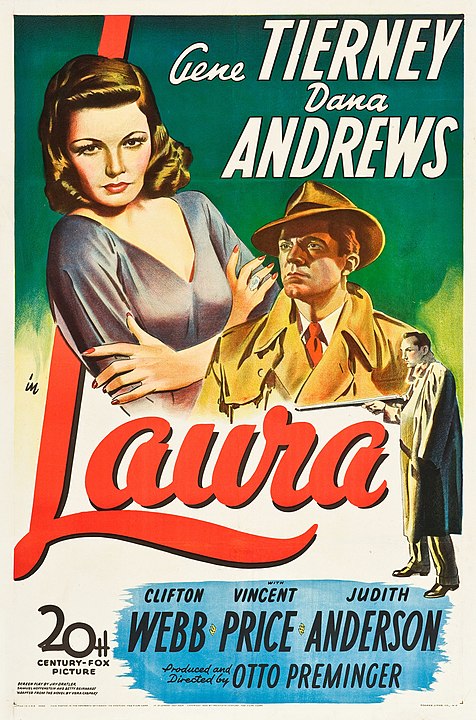
Laura is a classic film noir with a unique twist on the femme fatale character. Otto Preminger's 1944 movie keeps viewers guessing about Laura's nature. The film blurs the boundaries of the typical femme fatale, crafting a captivating and complex character whose existence and trustworthiness remain uncertain.
The story follows the mysterious Laura, who becomes the center of a murder investigation. As the plot unfolds, viewers are left to question their assumptions about her character. This uncertainty adds depth to the narrative and challenges the audience's expectations.
As the film explores Laura's character, it raises questions about the femme fatale trope itself. It urges viewers to reconsider stereotypes and embrace human nature's nuances. This approach elevates Laura beyond the usual noir film, solidifying its place as an outstanding film in the genre.
14. The Best Years of Our Lives (1946)
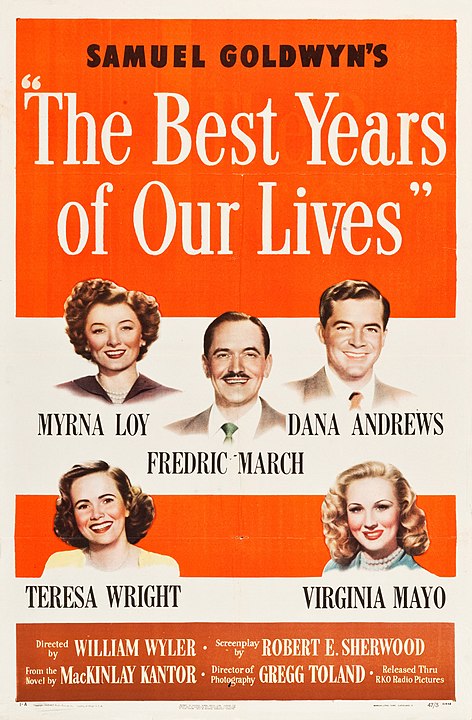
The Best Years of Our Lives is a powerful film exploring the challenges faced by World War II veterans. It portrays the journeys of three soldiers as they return home and strive to adjust to civilian life. Each character grapples with struggles of his own, from physical wounds to emotional scars.
The film's extended runtime (nearly three hours) allows audiences to take a deep look at war's impact. It shows how combat affects not just the soldiers but their families and communities, too. The characters face issues like finding jobs, reconnecting with loved ones, and dealing with trauma.
While some parts may seem overly sentimental now, the film provided much-needed comfort to audiences of its time. It gave voice to the experiences of many veterans and their loved ones. The movie's honest portrayal of post-war life struck a chord with viewers.
15. Casablanca (1942)
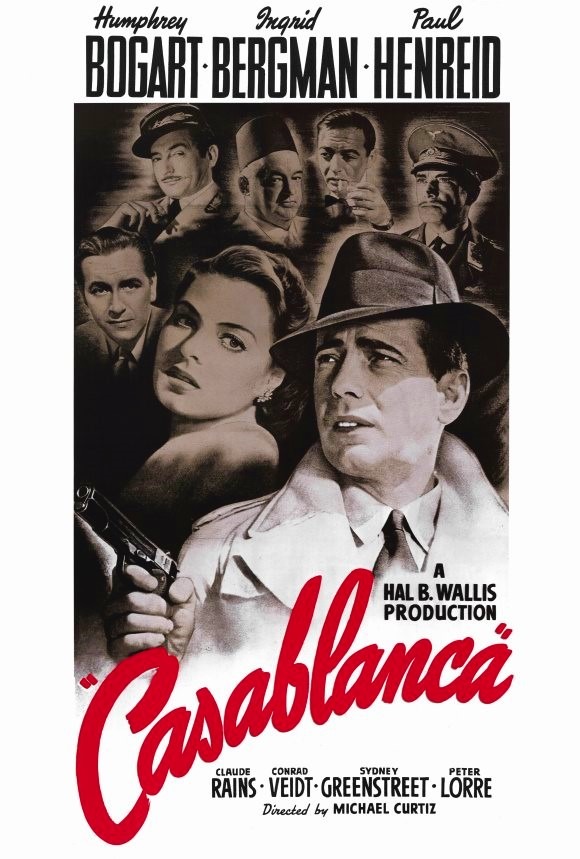
Casablanca is a masterpiece of 1940s cinema. Set against the backdrop of World War II, it recounts a compelling story of love and sacrifice. Humphrey Bogart portrays Rick, a nightclub owner in Morocco. His life takes a dramatic turn when Ilsa, played by Ingrid Bergman, walks into his bar.
The movie is famous for its brilliant dialogue and unforgettable characters. Claude Rains shines as the witty and corrupt police captain. Michael Curtiz's direction brings out the best in his cast, creating a perfect blend of drama and tension.
Casablanca is more than just a love story. It explores duty, patriotism, and moral choices. The film's impact has only grown over time. Not to mention that many lines from the movie have become part of pop culture. It continues to captivate viewers decades after its release. Casablanca's blend of romance, intrigue, and wartime drama remains as powerful today as it was in 1942.
16. Notorious (1946)

Director Alfred Hitchcock's career reached its peak with Notorious, a film that blends espionage, romance, and noir elements to create a complex narrative. Cary Grant stars as a government agent who recruits a German spy's daughter, played by Ingrid Bergman, for a dangerous mission.
The movie explores trust, loyalty, and deception in post-World War II America. Hitchcock's masterful direction keeps viewers in their seats as the characters go through the world of secrets and lies. The film's tension builds through clever plot twists and subtle performances.
Notorious displays Hitchcock's ability to craft complex characters and relationships. The romance between Grant and Bergman adds depth to the spy thriller plot, and their on-screen chemistry heightens the emotional stakes of the mission.
This film demonstrates the director's skill in balancing suspense with human drama. Notorious remains a classic example of Hitchcock's storytelling prowess and cinematic impact.
17. All About Eve (1950)

All About Eve is a landmark film in 1950s cinema. It earned an impressive 14 Academy Award nominations and took home six Oscars, including Best Picture and Best Director. The movie stars Bette Davis as a successful Broadway actress facing challenges from an ambitious newcomer.
Davis delivers a career-defining turn as Margo Channing, the aging theater star. Her role skillfully portrays a woman's fears and insecurities while struggling to remain relevant in a youth-obsessed industry. The film's exploration of female relationships and ambition was quite ahead of its time.
All About Eve offers an acerbic "insider" look at the entertainment world. It peels back the glitzy and glamorous facade to reveal show business's cutthroat nature. The clever script crackles with memorable one-liners and witty dialogue.
The film's impact goes far beyond its initial release. It continues to influence movies and TV shows about the entertainment industry today. All About Eve remains a must-watch for anyone interested in classic Hollywood or powerful female-driven stories.
18. North by Northwest (1959)

Another masterpiece by director Alfred Hitchcock, North by Northwest, is widely regarded as a masterpiece of adventure and suspense. With its thrilling narrative, the movie masterfully blends mistaken identity, espionage, and romance. The film receives praise for its iconic scenes, particularly the crop-duster chase and Mount Rushmore climax, demonstrating Hitchcock's flair for visual storytelling.
Lead star Cary Grant's charismatic performance and composer Bernard Herrmann's evocative score further elevate the film. However, some critics and viewers debate the plot's plausibility, though no one could argue about the film's stylish execution and entertainment value.
19. Miracle on 34th Street (1947)

Miracle on 34th Street is a beloved Christmas classic that goes beyond simple holiday cheer. The film follows Kris Kringle, a man who claims to be Santa Claus, as he brings joy to New York City. His presence gradually changes skeptical citizens' hearts, reminding them of the season's true spirit.
The movie shines not just as a festive tale but also as a courtroom drama. As Kris faces legal battles, the film delves into the contrast between childlike innocence and adult skepticism. The trial puts Christmas to the test, asking viewers to consider the value of faith in a cynical society.
Despite its fantastical premise, Miracle on 34th Street deals with its themes rather lightly. It allows the story to unfold naturally, avoiding heavy-handedness. This approach enables the film to tackle big ideas without sacrificing its charm or becoming preachy.
20. Rebel without a Cause (1955)
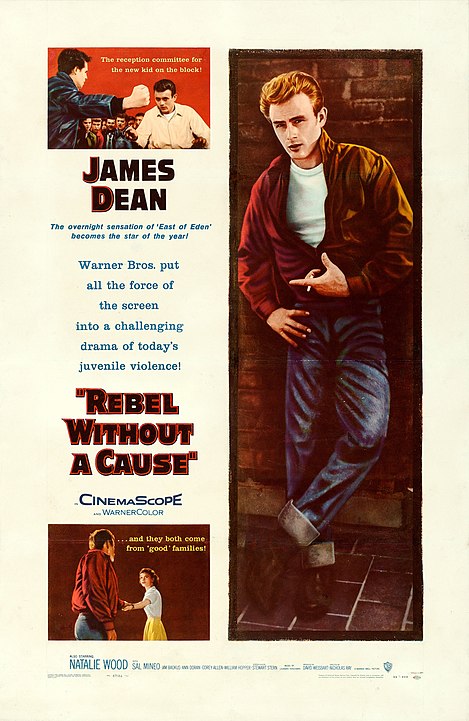
Rebel Without a Cause powerfully explores teenage angst and alienation, capturing the disillusionment of post-war youth. James Dean's iconic portrayal of Jim Stark exudes raw emotion and vulnerability, cementing the film's status as a seminal piece in Hollywood cinema.
However, the film's melodramatic elements may come across as exaggerated, and the portrayal of generational conflict may feel dated to today's audiences. But the film's impact on youth culture and its bold approach to social issues remain undeniable.

